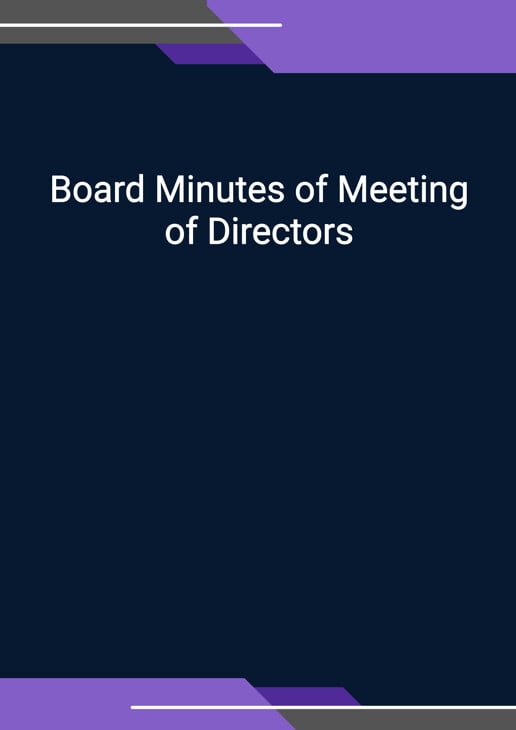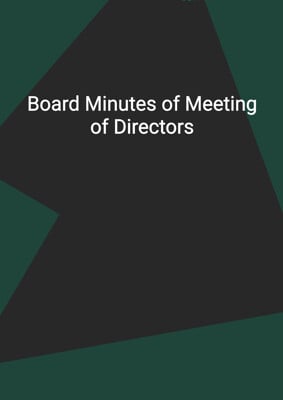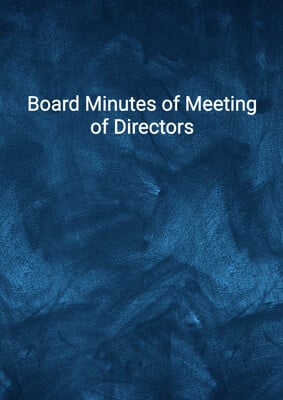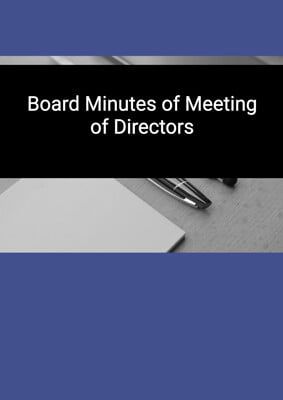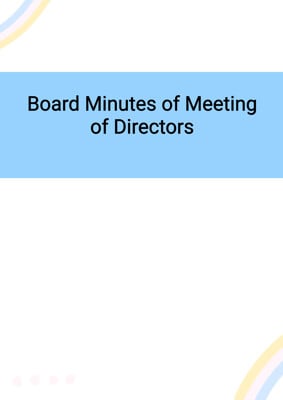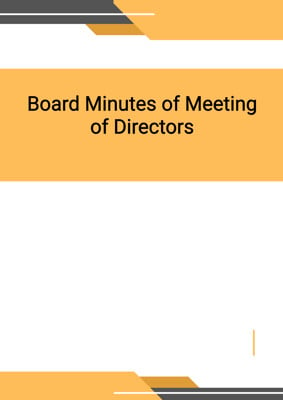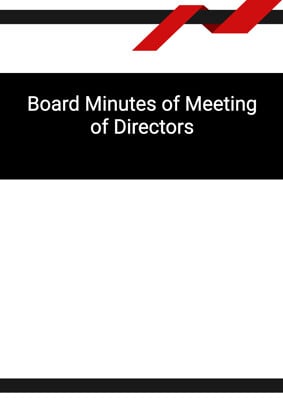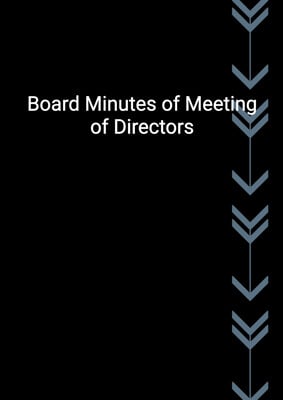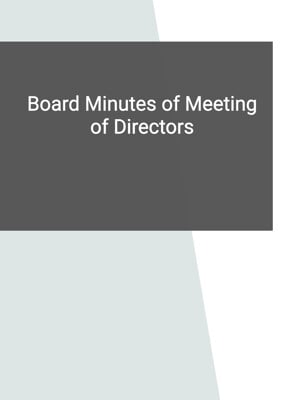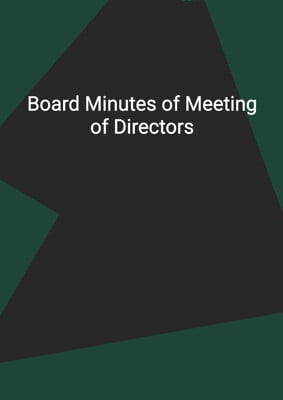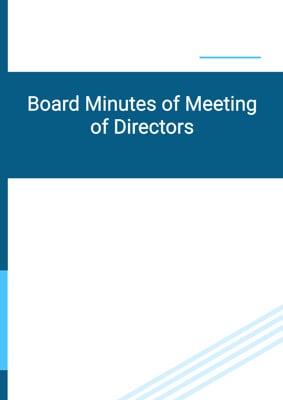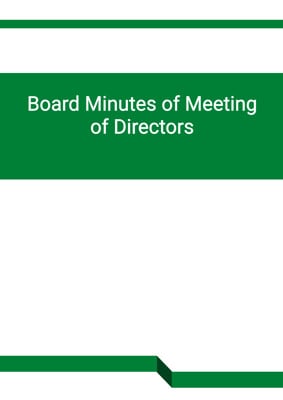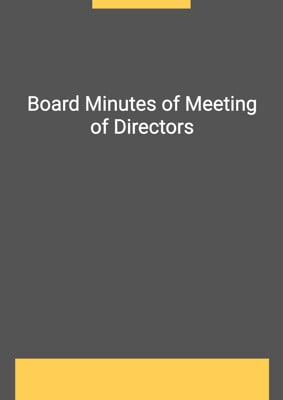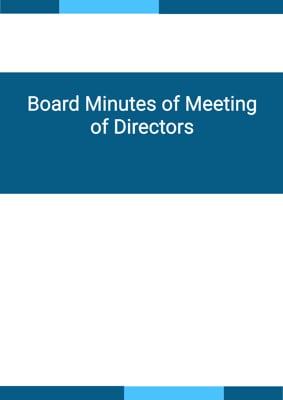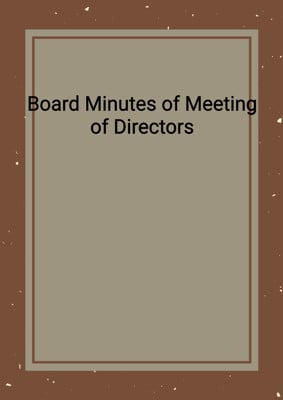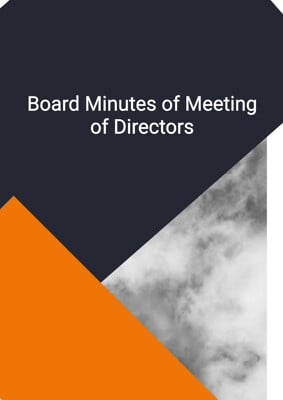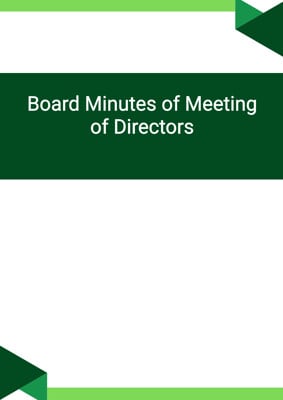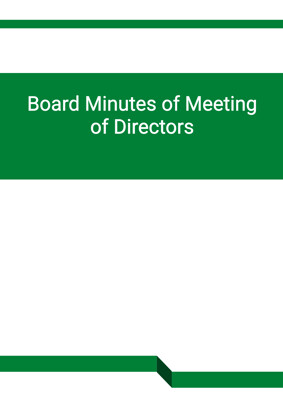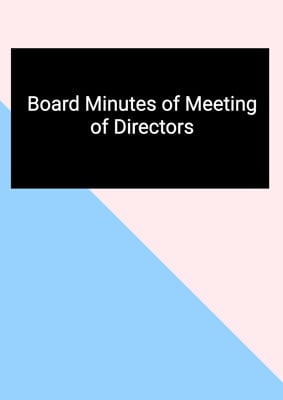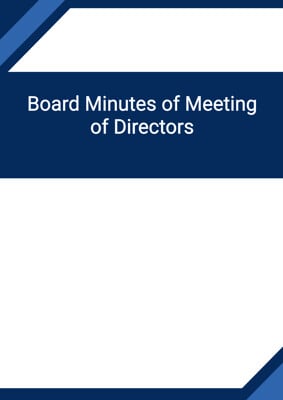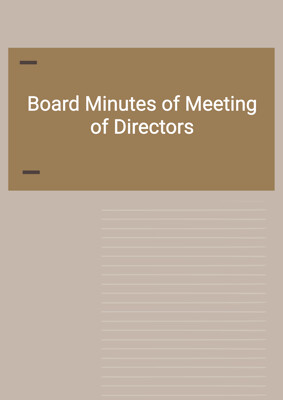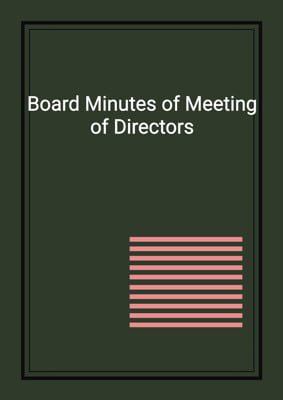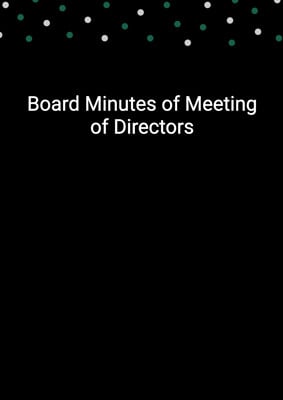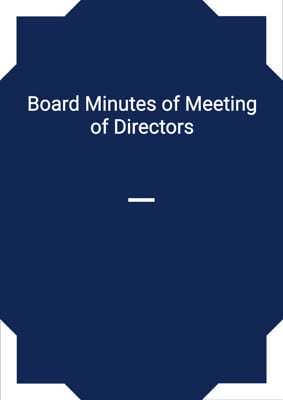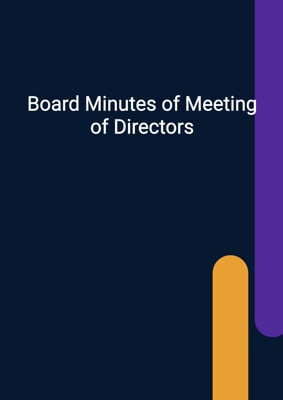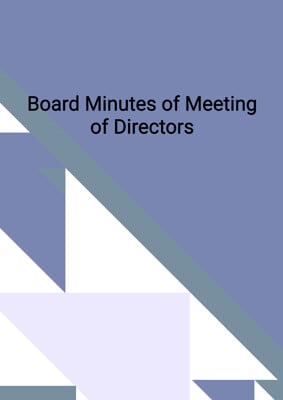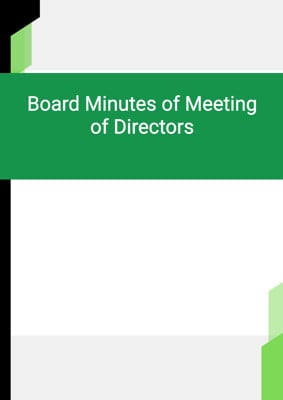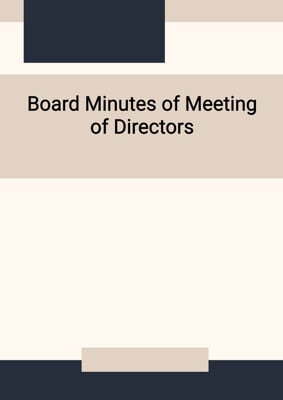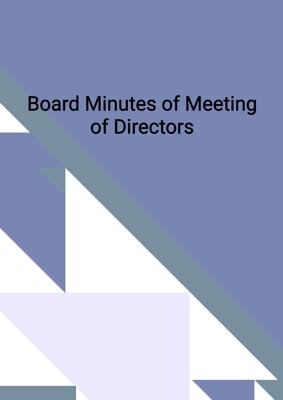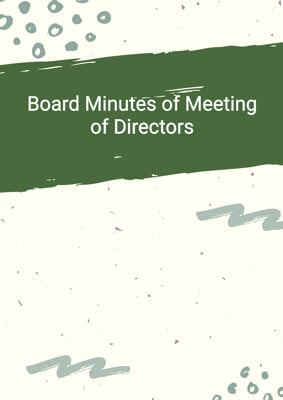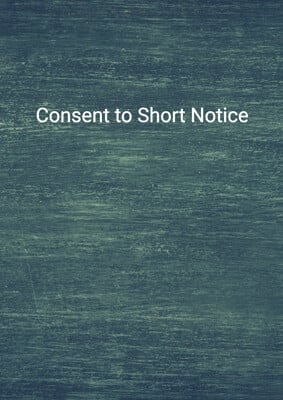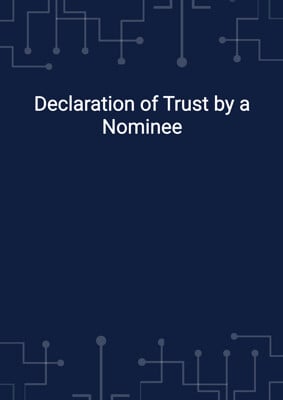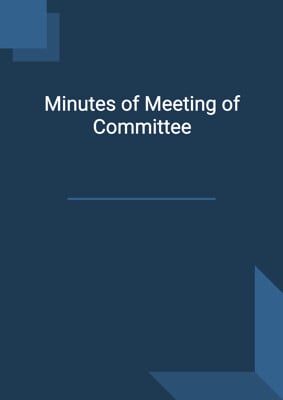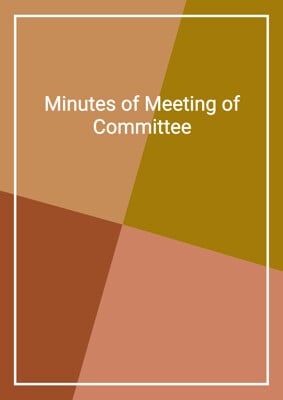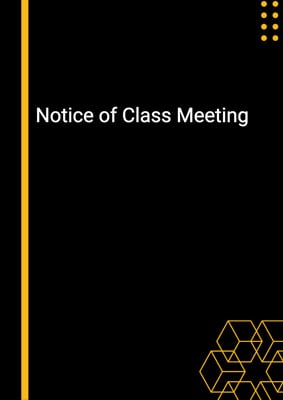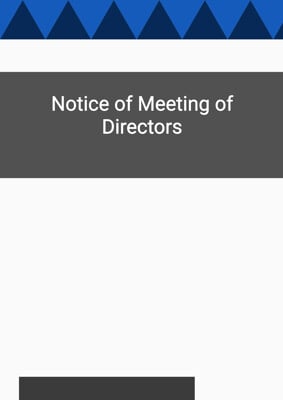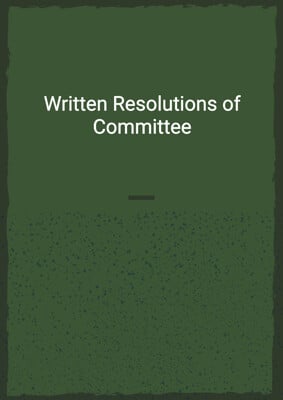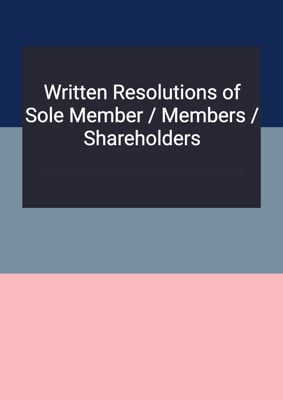How to Tailor the Document for Your Need?
01
Create Document
Click "Create Document" button and the document will be prepared with your account details automatically filled in.
02
Fill Information
Please fill in any additional information by following the step-by-step guide on the left hand side of the preview document and click the "Next" button.
03
Get Document
When you are done, click the "Get Document" button and you can download the document in Word or PDF format.
04
Review Document
Please review the document carefully and make any final modifications to ensure that the details are correct before publication / distribution.
Document Preview
Document Description
The 'Board Minutes of Meeting of Directors' document is a record of the discussions and decisions made during a meeting of the company's directors. It serves as an important legal document that provides evidence of the proceedings and actions taken by the board. The document begins with the title 'Board Minutes of Meeting of Directors' to clearly indicate its purpose.
The content of the document includes various sections that provide detailed information about the meeting. The first section includes the account job company details, such as the company's registration number and name. This information helps identify the company and ensures that the document is specific to the correct organization.
The next section is the 'Minutes of Meeting of Directors' section, which includes the date, time, and place of the meeting. This information is crucial for establishing the timeline and location of the meeting. It also includes a list of attendees, including the chairperson, directors, secretary, and any other individuals present.
The document also mentions any apologies received from directors who were unable to attend the meeting. This ensures transparency and acknowledges the absence of certain individuals.
The chairperson's notes are then provided, which cover various aspects of the meeting. These include the notice of the meeting, which confirms that all directors were informed in accordance with the company's memorandum and articles of association. This ensures compliance with legal requirements and ensures that all directors were properly notified.
The quorum section confirms that the required number of directors were present at the meeting. This is important to ensure that decisions made during the meeting are valid and binding.
If applicable, the document includes a section on the use of technology. This confirms that all directors consented to holding the meeting using technology and that no one withdrew their consent within a reasonable period before the meeting. This highlights the flexibility and adaptability of the company in utilizing technology for meetings.
If any directors have declared interests related to the meeting's agenda, this is mentioned in the document. The interests are listed, and it is noted whether the director(s) with a material personal interest in the matter complied with the company's memorandum and articles of association by not being present during the discussion and abstaining from voting on the resolution(s).
The main business of the meeting is then described. In this example, there are two possible scenarios: appointing or ceasing the appointment of a registered agent. The resolution and its effective date are clearly stated, ensuring that the decision is properly recorded.
Finally, the document concludes with the closing of the meeting. It is stated that there is no further business, and the chairman declares the meeting closed. This signifies the end of the proceedings.
The document includes spaces for signatures of the chairperson and directors, along with their printed names. This ensures that the document is properly authenticated and can be attributed to the individuals involved in the meeting.
How to use this document?
Guidance on how to use the 'Board Minutes of Meeting of Directors' document:
1. Review the document: Familiarize yourself with the content and structure of the document. Understand its purpose as a record of the meeting's discussions and decisions.
2. Customize the document: Replace the placeholder information with the actual details of your company, such as the company's name, registration number, and meeting date, time, and location.
3. Update the attendees: Modify the list of attendees to include the names and capacities of the chairperson, directors, secretary, and any other individuals present at the meeting.
4. Note any apologies: If any directors were unable to attend the meeting, insert their names in the 'Apologies' section to acknowledge their absence.
5. Confirm notice and quorum: Ensure that the notice of the meeting was properly given to all directors in accordance with the company's memorandum and articles of association. Verify that the required quorum of directors was present at the meeting.
6. Consider technology usage (if applicable): If the meeting was held using technology, confirm that all directors consented to this arrangement and that no one withdrew their consent within a reasonable period before the meeting.
7. Declare directors' interests (if applicable): If any directors have declared interests related to the meeting's agenda, follow the provided format to list their interests and note whether they complied with the company's rules regarding their involvement in the discussion and voting.
8. Address the main business: Modify the content of the 'Business' section to reflect the specific resolutions and decisions made during the meeting. Clearly state the resolution, its purpose, and its effective date.
9. Close the meeting: If there is no further business to discuss, declare the meeting closed, following the provided format.
10. Sign and authenticate the document: Ensure that the chairperson and directors sign the document to authenticate it. Print their names below their signatures.
11. Distribute the document: Share copies of the signed document with all directors and keep a copy for the company's records. This ensures that all parties have access to the official record of the meeting.
Note: This guidance provides a general overview of how to use the document. It is essential to consult legal professionals or follow your company's specific procedures to ensure compliance with applicable laws and regulations.
Not the right document?
Don’t worry, we have thousands of documents for you to choose from:
